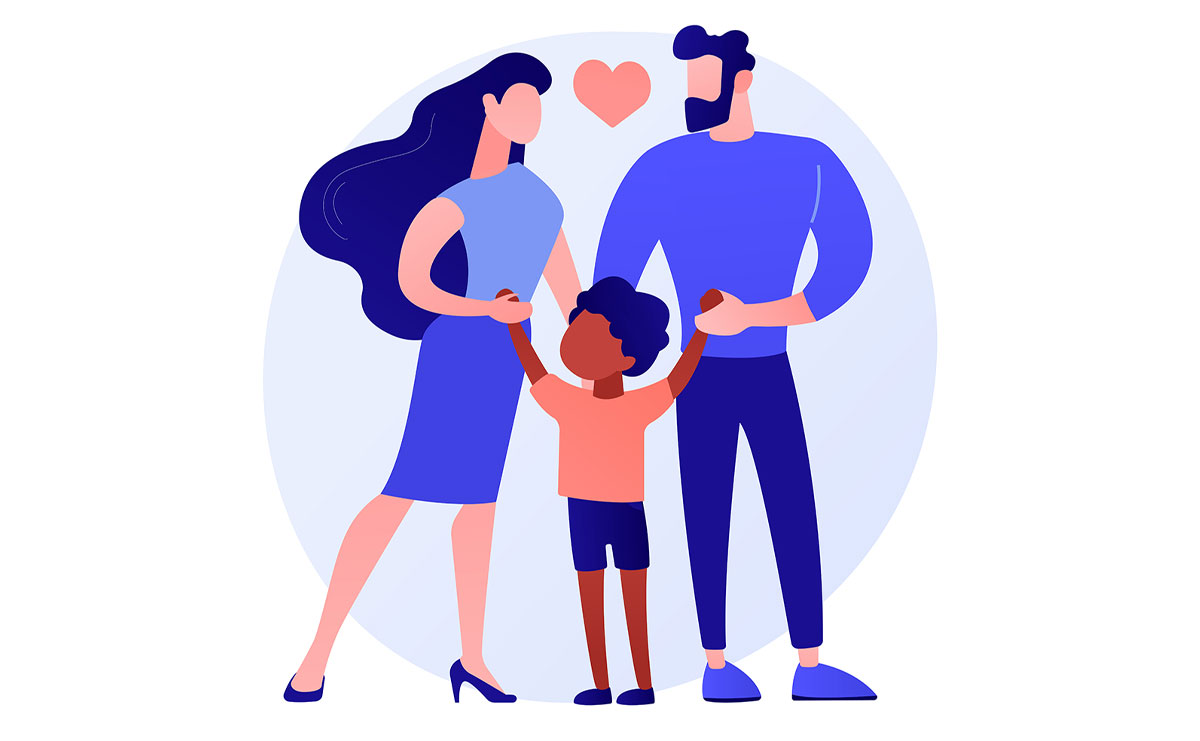Contents
Abortion rights have long been a deeply contentious and emotionally charged issue, stirring passionate debates across the globe. From ethical dilemmas and legal battles to questions of personal autonomy and societal values, the discussion surrounding abortion is as multifaceted as it is polarizing. To truly grasp the complexity of this topic, it is important to take a closer look at the arguments on both sides—those in favor of abortion rights and those against.
Historical Context of Abortion Rights
The historical context of abortion rights is a complex and multifaceted narrative shaped by legal, social, and cultural developments over centuries. In ancient civilizations, abortion practices were documented with varying degrees of acceptance. For example, in Ancient Greece, philosophers like Aristotle considered abortion permissible before “ensoulment,” which he believed occurred 40 days after conception for males and 90 days for females. Similarly, Ancient Roman law allowed abortion but punished it if performed without the husband’s consent. In medieval Christian Europe, early Church doctrine often mirrored these distinctions. However, stricter anti-abortion views emerged by the 13th century, influenced by theologians like St. Thomas Aquinas.
In colonial America, abortion was generally legal until “quickening,” the point when fetal movement became detectable around the fourth or fifth month of pregnancy. However, the 19th century saw a shift toward criminalizing abortion. This change was driven in part by the professionalization of medicine, with groups like the American Medical Association advocating for anti-abortion laws to assert their authority over medical procedures. Social and moral campaigns emphasizing the sanctity of motherhood and family further bolstered these restrictions.
The 20th century marked a significant turning point. During the early part of the century, strict anti-abortion laws dominated, forcing many women to seek dangerous, illegal procedures. By the mid-20th century, changing social attitudes, advances in women’s rights, and medical developments fueled calls for reform. In the 1960s, some states began liberalizing abortion laws, citing public health concerns and women’s autonomy. The Supreme Court’s decision in Griswold v. Connecticut (1965), which established the right to privacy in contraception, laid critical groundwork for broader reproductive rights.
The landmark Roe v. Wade decision in 1973 declared abortion a constitutional right under the 14th Amendment, protecting it up to viability (around 24 weeks of pregnancy). While celebrated by women’s rights advocates, this decision galvanized anti-abortion movements, particularly among religious and conservative groups. Over the decades, subsequent laws imposing restrictions, such as mandatory waiting periods and parental consent requirements, gradually chipped away at abortion access.
Globally, abortion rights have also experienced varied trajectories. Many countries liberalized their laws due to health crises or feminist movements, but cultural and religious opposition continues to restrict access in numerous regions. In the United States, the Supreme Court’s 2022 decision in Dobbs v. Jackson Women’s Health Organization overturned Roe v. Wade, returning the authority to regulate abortion to individual states. This created a patchwork of laws, with some states banning abortion outright and others expanding access.
The evolution of abortion rights is deeply tied to broader societal shifts and persistent debates over gender equality, bodily autonomy, and healthcare access. It also reflects enduring tensions between personal freedoms and the influence of religious and cultural norms, making it one of the most contentious issues in modern history.
Arguments For Abortion Rights
Advocating for abortion rights involves several key arguments grounded in ethics, law, public health, and social justice. Below are common points raised in favor of the right to access abortion:
-
Bodily Autonomy
One of the most prominent arguments for abortion rights is the principle of bodily autonomy. Advocates argue that individuals have the right to make decisions about their own bodies, including whether to carry a pregnancy to term. Forcing someone to remain pregnant against their will is seen as a violation of personal freedom and human rights.
-
Public Health Considerations
Unsafe abortions are a leading cause of maternal mortality in regions where abortion access is restricted. Proponents contend that legalizing and regulating abortion reduces the number of hazardous procedures and saves lives. Comprehensive reproductive healthcare, including abortion, is seen as a critical component of public health.
-
Socioeconomic Impacts
Carrying an unwanted pregnancy can have profound financial and social consequences. Advocates emphasize that abortion access enables individuals to avoid situations that might lead to poverty, impede educational opportunities, or exacerbate existing inequalities.
-
Compassionate Response to Complex Situations
Supporters of abortion rights highlight the relief it brings to individuals facing complex pregnancies, including cases of rape, incest, or severe fetal anomalies. In such instances, they argue, access to abortion is a compassionate response that prioritizes the well-being of the individual involved.
-
Gender Equality
The ability to control reproductive decisions is seen as foundational to gender equality. With access to abortion, women and people capable of pregnancy are empowered to overcome disproportionate barriers and achieve their personal and professional goals.
-
Preventing Child Neglect and Abuse
When individuals are forced to have children, they cannot adequately care for, the risk of neglect, abuse, and poor outcomes increases. It is our responsibility to prevent such situations, and abortion rights play a crucial role in this effort.
Arguments Against Abortion Rights
The opposition to abortion rights often stems from ethical, religious, philosophical, and societal perspectives. Below are common arguments raised against the right to access abortion:
-
Right to Life
The cornerstone of the anti-abortion argument is the belief that life begins at conception. From this perspective, abortion constitutes the taking of an innocent human life and is morally equivalent to murder. This argument often stems from religious or philosophical convictions about the sanctity of life.
-
Ethical Concerns
Opponents raise ethical concerns about terminating potential life. They argue that society has to protect its most vulnerable members, including the unborn, and that abortion undermines this responsibility.
-
Alternatives to Abortion
Critics of abortion rights advocate for alternatives, such as adoption, as solutions to unwanted pregnancies. They suggest that with adequate support systems in place, individuals can carry pregnancies to term without feeling compelled to resort to abortion.
-
Psychological and Emotional Effects
Some studies, such as [specific study], and anecdotal accounts suggest that abortion can have long-term psychological effects on individuals, including feelings of guilt, depression, or regret. Opponents argue that these potential consequences warrant stricter regulations or a complete abortion ban.
-
Impact on Society
Some argue that widespread access to abortion devalues human life and could lead to a slippery slope of moral decay, a concept that suggests that once a society accepts one morally questionable practice, it becomes easier to accept others. They fear that normalizing abortion might have broader societal implications, such as reduced accountability in sexual and reproductive behavior.
-
Potential for Exploitation
Opponents argue that abortion could be used to eliminate fetuses based on undesirable traits, such as disabilities, gender, or other characteristics, leading to discriminatory practices. Some claim that the abortion industry prioritizes profit over the well-being of women and unborn children.
-
Protection of Vulnerable Populations
Advocates against abortion argue that fetuses cannot advocate for themselves, and society has a moral duty to protect the most vulnerable. Some argue that fathers should have a say in the decision to terminate a pregnancy, as it also impacts their rights and interests.
-
Responsibility and Accountability
Some argue that individuals should take responsibility for the consequences of sexual activity, including unplanned pregnancies. This sense of responsibility is a fundamental aspect of ethical decision-making. Critics of abortion rights often promote abstinence or natural family planning as ethical methods of preventing unwanted pregnancies, reinforcing this sense of accountability.
-
Societal Value of Motherhood
Opponents often highlight the value of motherhood and encourage society to celebrate and support women who carry pregnancies to term. The unique role of mothers in nurturing and shaping future generations is a cornerstone of our society, and widespread acceptance of abortion undermines this societal respect for motherhood and family.
The Role of Law and Policy
Legal frameworks for abortion vary significantly across the globe, reflecting cultural, religious, and political differences. In some countries, such as the United States and Canada, abortion is accessible on demand, while in others, like Ireland and El Salvador, it is heavily restricted or banned altogether. The role of the judiciary and legislation in shaping abortion policy underscores the tension between individual rights and collective moral standards.
In liberal democracies, the legal landscape often seeks to balance reproductive rights with societal values. Courts play a crucial role in interpreting constitutional protections, such as the right to privacy, bodily autonomy, or health, to determine the scope of abortion access. Landmark cases, such as Roe v. Wade in the United States, exemplify how judicial decisions can radically redefine abortion rights and provoke widespread societal debate. Similarly, in other jurisdictions like Ireland and Argentina, grassroots advocacy and judicial rulings have driven legal reforms to liberalize abortion laws.
On the legislative side, the crafting of abortion laws often reflects the prevailing political ideologies of the time. In some regions, lawmakers enact policies that impose waiting periods, mandatory counseling, or parental consent requirements, often aiming to protect potential life while indirectly restricting access. In contrast, ‘progressive policies’ in other countries, which prioritize individual rights and health, seek to ensure equitable access by removing financial and logistical barriers, emphasizing abortion as a matter of public health and gender equality.
International human rights frameworks play a significant role in shaping abortion policies globally. Organizations like the United Nations and the World Health Organization advocate for access to safe and legal abortion as a fundamental aspect of reproductive health rights. This global perspective is crucial for understanding the complexities of abortion laws, as the extent to which these recommendations are implemented depends on national sovereignty and local governance structures.
The influence of cultural and religious norms further complicates the intersection of law and policy in abortion rights. In predominantly conservative societies, religious doctrines often underpin legal prohibitions on abortion, framing it as morally unacceptable. On the other hand, secular governance in some nations prioritizes evidence-based policy-making to address the public health implications of unsafe abortions.
Ultimately, the legal and policy dimensions of abortion reflect broader societal questions about autonomy, equality, and morality. As debates continue, the role of law and policy remains pivotal in shaping the lived experiences of individuals navigating these deeply personal decisions. Your engagement in these debates is crucial, as it shapes the future of abortion laws and policies.
How Different Countries Handle Abortion Rights
Abortion laws worldwide have shown a significant trend toward liberalization, reflecting each nation’s unique cultural, religious, and political contexts. This trend, observed over the past few decades, is a key aspect of the diversity in abortion laws, despite some countries enacting more restrictive measures.
Since 2000, numerous countries have expanded legal grounds for abortion. For instance, Argentina legalized abortion up to 14 weeks in 2020, and Thailand permitted abortions up to 12 weeks in 2021. (PBS)
Conversely, some nations have tightened abortion laws. Poland, for example, implemented a near-total ban in 2020, allowing abortions only in cases of rape, incest, or threats to the mother’s life. (CFR)
Europe, a continent of diverse perspectives, displays a spectrum of abortion laws. France enshrined the right to abortion in its constitution in 2024, reinforcing women’s reproductive rights. In contrast, Malta maintains a total ban, permitting abortion only to save the mother’s life. Poland’s stringent laws have sparked significant public protests and debates, highlighting the range of views on this issue. (Reuters)
The ‘Green Wave’ movement, a beacon of hope in Latin America, has propelled progressive changes. Mexico’s Supreme Court decriminalized abortion at the federal level in 2023, allowing access to federal hospitals even in states where it remains criminalized. Similarly, Colombia’s Constitutional Court legalized abortion on demand up to 24 weeks in 2022, marking a significant victory for reproductive rights. (Time)
Many countries in Africa permit abortion under specific conditions, such as to save the mother’s life or in cases of rape. However, access remains limited due to stigma, lack of information, and logistical challenges. A recent court ruling in Zimbabwe deemed it unconstitutional to deny abortion services to marital rape victims and girls under 18, marking a significant step toward reproductive rights.
In Asia, China has historically promoted abortion as part of its family planning policies, though recent shifts encourage more prominent families. India, with its recent amendments extending the gestational limit for some instances, permits abortion under various conditions. Japan allows abortion up to 22 weeks, primarily for economic and health reasons. (Wikipedia)
In North America, the legal landscape has seen significant changes, particularly following the 2022 Supreme Court decision overturning Roe v. Wade. This has led to a patchwork of state laws, with some states imposing strict bans and others protecting abortion rights. The resulting divergence has led to increased interstate travel for abortion services and heightened legal battles.
In Canada, abortion is legal at all stages of pregnancy, with access varying by province. The procedure is funded under the Canada Health Act, ensuring nationwide availability. (Wikipedia)
The Way Forward
Understanding the arguments for and against abortion rights is not just important, it is urgent. Fostering informed and respectful dialogue is crucial. Whether one views abortion as a fundamental right or a moral wrong, the issue touches on deep ethical, legal, and personal dimensions that demand our immediate and careful consideration.
A society committed to justice and equity must strive to balance competing rights and values while ensuring all individuals can make decisions based on their beliefs and circumstances. By promoting empathy and mutual respect, we can navigate this challenging issue in ways that uphold human dignity and well-being and foster a culture of understanding and acceptance.
Final Thoughts
The debate over abortion rights is as complex as it is deeply personal, touching on issues of autonomy, ethics, health, and societal values. It reflects a broader struggle to reconcile individual freedoms with collective moral and cultural norms. While opinions diverge sharply, the importance of fostering respectful, informed dialogue cannot be overstated.
By acknowledging the historical, legal, and global dimensions of abortion rights, we gain a deeper understanding of why this issue evokes such strong emotions and polarized opinions. It is clear that the way forward lies in reducing unintended pregnancies, improving access to healthcare, and supporting those faced with difficult choices.
Above all, a just and equitable society must strive to ensure that laws and policies reflect the diversity of human experience. Through empathy, education, and a commitment to shared solutions, we can create a framework that upholds human dignity while fostering a more inclusive and compassionate culture.
FAQs
What are the reasons for abortion?
Abortion decisions are influenced by health risks, socioeconomic challenges, personal circumstances, cases of violence, societal pressures, and the desire for autonomy. Each choice reflects unique and deeply personal factors, including financial instability, unplanned pregnancies, or the need to prioritize existing responsibilities.
Why are people against abortion?
Opposition to abortion is often rooted in moral, ethical, and religious beliefs, with many viewing it as the taking of a human life and emphasizing the sanctity of life from conception. Advocates for fetal rights argue that fetuses have an independent right to life, and some believe alternatives like adoption can address unwanted pregnancies without terminating life. Cultural norms and societal values may also view abortion as taboo, while concerns about its potential misuse or the emotional impact on individuals further fuel opposition. Personal experiences and convictions often shape these deeply held beliefs, making abortion a complex and polarizing issue.
How common is abortion?
Abortion is a standard medical procedure worldwide, with millions of women accessing it annually. According to the World Health Organization (WHO), approximately 73 million induced abortions occur globally each year, representing about 29% of all pregnancies ending in abortion. Rates vary significantly between regions, influenced by factors such as access to contraception, societal attitudes, and legal frameworks.
In countries with liberal abortion laws, the procedure is often safer and performed earlier in pregnancy. Conversely, restrictive laws may lead to unsafe abortions, particularly in low-resource settings. In the United States, for example, around 1 in 4 women are estimated to have an abortion at some point during their reproductive years. These figures highlight that abortion is a prevalent aspect of reproductive healthcare worldwide.
Disclaimer: The content provided on this blog is for informational purposes only and does not constitute legal, financial, or professional advice.







